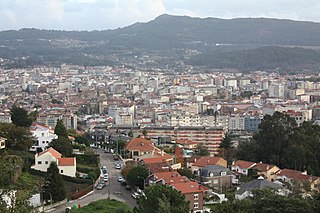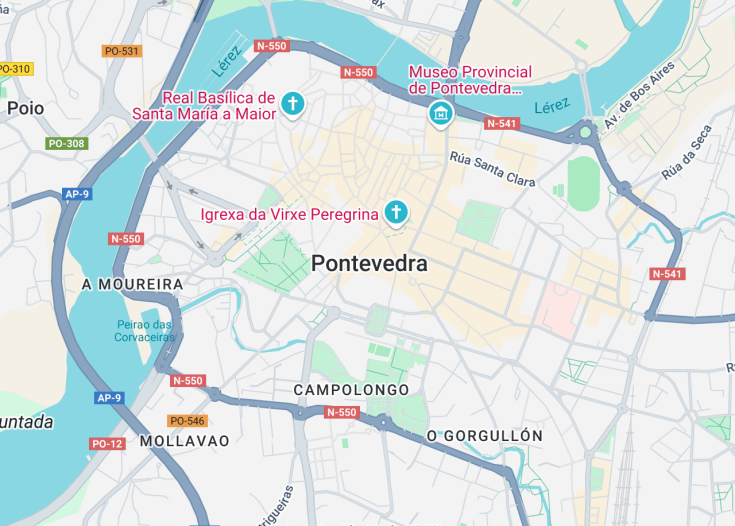Pontevedra, a picturesque city in the northwest of Spain, is celebrated for its rich history, stunning architecture, and vibrant cultural scene. Nestled in the heart of Galicia, this charming city offers a unique blend of ancient traditions and modern living. Its well-preserved Old Town, characterized by narrow cobblestone streets and quaint plazas, is a UNESCO World Heritage site.
Visitors are captivated by landmarks such as the Basilica of Santa Maria la Mayor, a superb example of Gothic-Renaissance style. With its pedestrian-friendly streets, Pontevedra promotes a leisurely exploration, making it an ideal destination for history buffs and culture enthusiasts alike.
Plan your visit to coincide with the Feira Franca, a medieval festival held annually in September, to experience Pontevedra at its most festive and vibrant.
Don’t miss a walking tour of the historic district to fully appreciate Pontevedra’s architectural gems and hidden courtyards.
Pontevedra: A Jewel of Galicia
| Country | Spain |
| Time in Pontevedra | GMT+1 |
| Language spoken | Spanish (Galician also widely used) |
| Population | 83,260 (source: National Institute of Statistics, Spain, 2021) |
| Currency | Euro (€, EUR) |
| Airports |
|
Pontevedra, nestled in the northwest of Spain in the autonomous community of Galicia, is a city renowned for its rich medieval history and beautiful landscapes. Known for its well-preserved old town, Pontevedra is often celebrated for the numerous historical buildings including the Basilica of Santa Maria, a stunning example of late Gothic architecture, and the Ruins of Santo Domingo. Its stone-paved streets and ancient squares offer a glimpse into its glorious past.
The city is not just about historical treasures; it is also adjacent to the picturesque Rías Baixas, famous for their scenic beauty and the Albariño wine. Pontevedra’s cultural vibrancy is visible in its numerous festivals, such as the Feira Franca, a medieval fair that transforms the city back to the 15th century each September. Environmental conservation also plays a crucial role in the city’s life, as it has gained global recognition for its pioneering pedestrianization project making the city center virtually car-free, enhancing the quality of life for residents and the experiences of visitors alike.
Where is Pontevedra?
Located in Galicia, Pontevedra sits at the head of the Pontevedra estuary, surrounded by mountains and rivers that create a picturesque setting in northwest Spain.
Distances:
| Route | Distance by car | Time by car |
|---|---|---|
| Madrid to Pontevedra | 362 miles (583 km) | Approx. 5 hours 45 minutes |
| Barcelona to Pontevedra | 688 miles (1108 km) | Approx. 10 hours 30 minutes |
| Seville to Pontevedra | 435 miles (700 km) | Approx. 7 hours |
What is Pontevedra famous for?
Pontevedra is famous for its well-preserved historical city center, the Romanesque Basilica of Santa Maria, and its strong cultural traditions including the medieval Feira Franca festival.
History
Pre-Roman Era to Middle Ages (Before 1st Century – 15th Century)
The area now known as Pontevedra was initially inhabited by Celtic tribes, particularly the Gallaeci, who were known for their fortified settlements and warrior culture. With the Roman conquest of the Iberian Peninsula, Pontevedra began to gain prominence due to its strategic coastal location. The Romans developed roads and infrastructure, connecting Pontevedra to other parts of the empire. After the fall of the Roman Empire, the region saw a series of invasions and dominations including by the Suebi and the Visigoths. The Middle Ages brought relative stability under Christian rule, which led to the establishment of many religious structures and the beginnings of its urban development.
Golden Age and Decline (16th Century – 19th Century)
The 16th century marked the beginning of Pontevedra’s Golden Age, facilitated by its flourishing maritime trade, especially with the Americas. This period saw the construction of many of the city’s iconic buildings and increased cultural developments. However, by the mid-17th century, the city began to decline due to several factors including silting of its port, competition from nearby cities, and economic hardships. The 19th century brought modernization though it also faced challenges from political instability and economic shifts in Spain.
Modern Era and Revitalization (20th Century – Present)
The 20th century was a period of mixed fortunes for Pontevedra. The city experienced the impacts of the Spanish Civil War and the subsequent Francoist dictatorship. Post-Franco, Pontevedra slowly began to revitalize itself, particularly from the late 20th century onwards. Urban renewal projects improved the city’s infrastructure and quality of life, focusing on pedestrianization and cultural initiatives. Today, Pontevedra is noted for its high quality of life, historical preservation, and environmental consciousness, making it a unique blend of history and modernity.
Visit Pontevedra
What to see and do in Pontevedra
Pontevedra, with its rich historical heritage and vibrant culture, offers a plethora of attractions and activities. Key sites include the Basilica of Santa Maria la Mayor, a superb example of Gothic-Renaissance style, and the Ruins of Santo Domingo, which highlight medieval architecture.
Stroll through the charming Old Town, with its narrow, winding streets and picturesque plazas like Praza da Leña.
- Explore the Museo de Pontevedra, a comprehensive museum that reflects the city’s history and art.
- Visit the Pontevedra Market on a bustling morning to experience local life and cuisine.
- Take a walk along the Lérez River, enjoying the peaceful riverside parks.
Pontevedra also offers a vibrant nightlife with numerous bars and restaurants serving traditional Galician cuisine.
Festivals and Events in Pontevedra
Pontevedra hosts several annual events that are deeply rooted in local tradition and culture, drawing visitors from all around. Noteworthy among them is the Feira Franca, a medieval fair held in the first weekend of September where the city recreates the atmosphere of the Middle Ages with costumes, crafts, and old-time contests.
Summer brings the Pontevedra International Jazz Festival, showcasing renowned international artists and vibrant performances throughout July.
Best time to visit Pontevedra
The best time to visit Pontevedra is during the late spring (May to June) or early autumn (September to October). During these months, the weather is pleasantly mild, and the city is less crowded, allowing for a more relaxed exploration of its historic sites and natural beauty.
Additionally, visiting during these times allows one to participate in local festivals which are significant cultural highlights.
Is Pontevedra worth visiting?
Pontevedra is certainly worth visiting for its rich cultural tapestry, well-preserved historical architecture, and vibrant local life. The city offers a unique glimpse into the past and present of Galicia, making it a compelling destination for history enthusiasts and cultural explorers alike.
The pedestrian-friendly streets, lush green spaces, and the peaceful rhythm of life here provide a refreshing escape from the hustle and bustle of larger cities.









